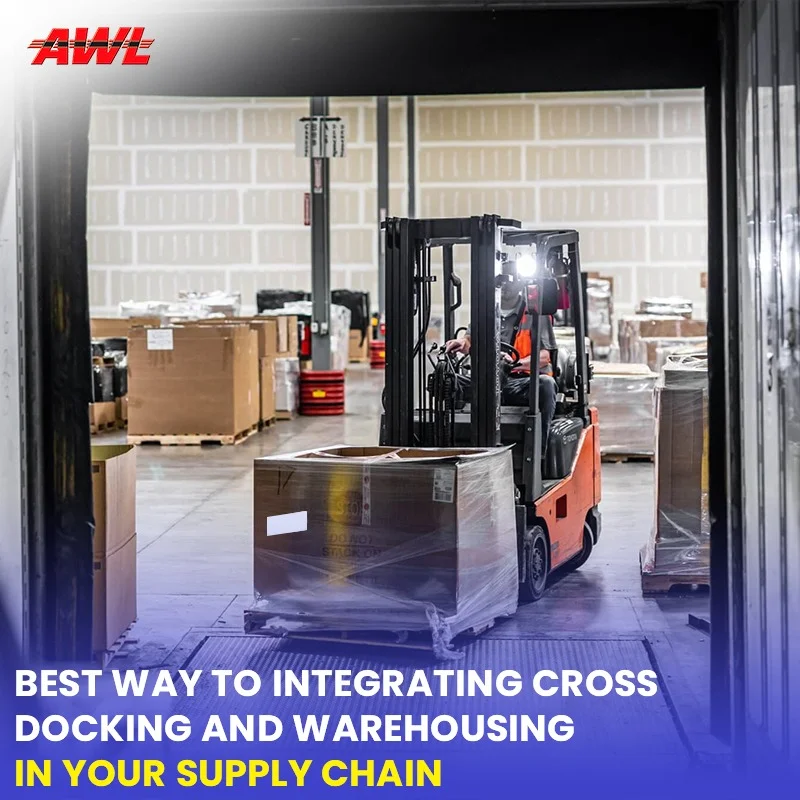

In today’s competitive business environment, companies must constantly find ways to streamline their supply chains, improve efficiency, and reduce costs. One of the most effective strategies for achieving these goals is integrating cross docking with warehousing operations. By combining the speed of cross docking with the inventory management capabilities of warehousing, businesses can create a seamless and efficient supply chain that meets customer demands more effectively.
At AWL India, we specialise in both cross docking and warehousing services, offering advanced solutions that help businesses optimise their supply chains. As one of the leading logistics service providers in India, headquartered in Gurgaon, AWL India is also known for pioneering RFID technology in its warehousing practices. In this blog, we will explore the best ways to integrate cross docking and warehousing, along with the role of RFID technology in enhancing these processes.
Cross docking is a logistics strategy that involves unloading goods from incoming shipments and directly transferring them onto outbound trucks with minimal or no storage. The process eliminates the need for long-term warehousing and speeds up the distribution of goods. This method is ideal for perishable goods, fast-moving consumer goods (FMCG), and businesses with high turnover rates.
The integration of cross docking with warehousing allows companies to handle both short-term and long-term storage while ensuring rapid distribution, making it a powerful combination for supply chain optimization.
Cross docking and warehousing may seem like opposing strategies—one emphasises speed while the other focuses on storage—but when used together, they create a well-rounded logistics approach. Here are some of the key reasons to integrate the two:
By combining cross docking and warehousing, businesses can manage both fast-moving products and goods that require long-term storage. Cross docking ensures that high-demand items move quickly through the supply chain, while warehousing provides a safe and controlled environment for items that need to be stored longer. At AWL India, we offer tailored solutions that allow businesses to strike the right balance between rapid distribution and effective inventory management.
Integrating cross docking with warehousing also enables better inventory control. By routing fast-moving goods through cross docking and storing other items in a warehouse, businesses can optimise inventory levels and reduce overstocking or stockouts. Efficient inventory management can be further enhanced with RFID warehouse management systems, which offer real-time tracking of goods. With AWL India’s RFID inventory tracking system, businesses can keep track of both warehoused goods and cross-docked items, ensuring accurate stock levels and improving supply chain visibility.
Cross docking minimises the need for long-term storage, which can significantly reduce storage costs. By only storing items that require warehousing and quickly distributing others, businesses can lower overheads and improve cash flow. Additionally, integrating warehousing with cross docking reduces the amount of handling, which decreases the risk of damage to products. AWL India offers both cross docking & warehouse services, ensuring that businesses can benefit from cost reductions without compromising on efficiency.
One of the key advantages of cross docking is the speed it adds to the supply chain. By integrating cross docking with warehousing, businesses can prioritise fast-moving goods for immediate distribution, reducing delivery times to customers. The combination allows companies to be more responsive to customer demands and improve overall service levels. At AWL India, our cross docking and warehousing solutions are designed to accelerate product delivery, ensuring that your business can meet market demands faster.
Successfully integrating cross docking and warehousing into your supply chain requires careful planning and execution. Below are some of the best practices for achieving a smooth integration:
RFID (Radio Frequency Identification) technology plays a critical role in enhancing both cross docking and warehousing operations. An RFID warehouse management system allows for real-time tracking of goods, ensuring accurate inventory levels and minimising human error. RFID tags attached to products can be scanned as they pass through various stages of the supply chain, from arrival at the warehouse to departure during cross docking.
At AWL India, we utilise RFID technology to improve supply chain transparency and efficiency. Our RFID warehouse inventory tracking system provides real-time data on stock levels, product locations, and movements, enabling businesses to make data-driven decisions.
To effectively integrate cross docking and warehousing, businesses should segment their inventory based on demand and storage requirements. High-demand items should go through cross docking, while goods that need longer storage can be placed in the warehouse. This segmentation ensures that products are handled efficiently and minimises delays in distribution.
AWL India’s team of logistics experts can help you analyse your inventory and determine the best segmentation strategy for your business.
To maximise the benefits of cross docking and warehousing, businesses need an optimised supply chain network. This involves choosing the right locations for warehouses and cross docking facilities to minimise transportation times and costs. Strategic placement of these facilities ensures that products are distributed quickly and cost-effectively.
At AWL India, we help businesses design and implement optimised supply chain networks that include both warehousing and cross docking solutions.
4. Use Data Analytics for Better Decision-Making
Data analytics is essential for optimising cross docking and warehousing operations. By analysing supply chain data, businesses can forecast demand, manage inventory levels, and identify areas for improvement. Data-driven decisions allow for better resource allocation and enhance overall supply chain efficiency.
With AWL India’s advanced tracking systems, including RFID technology, businesses can access real-time data to make informed decisions and improve the performance of their supply chains.
Cross docking and warehousing integration can be applied across a variety of industries. Here are some of the key sectors where this approach is particularly beneficial:
AWL India provides customised solutions for these and other industries, helping businesses integrate cross docking and warehousing to meet their specific needs.
As one of the leading logistics and warehousing providers in India, AWL India is at the forefront of supply chain innovation. We were one of the first companies in the country to introduce RFID technology in warehousing, revolutionising inventory tracking and management. Our RFID warehouse system ensures accurate, real-time data on product movements, enhancing both cross docking and warehousing processes.
With our expertise in cross docking, warehousing, and RFID warehouse inventory tracking, AWL India offers end-to-end logistics solutions that help businesses optimise their supply chains and stay ahead of the competition. Integrating cross docking and warehousing into your supply chain is one of the most effective ways to reduce costs, improve efficiency, and enhance customer satisfaction. By leveraging advanced technologies like RFID inventory tracking systems, businesses can streamline operations and make data-driven decisions.
At AWL India, we are committed to helping businesses succeed by providing state-of-the-art cross docking and warehousing services. If you’re ready to take your supply chain to the next level, AWL India is your trusted partner in logistics

